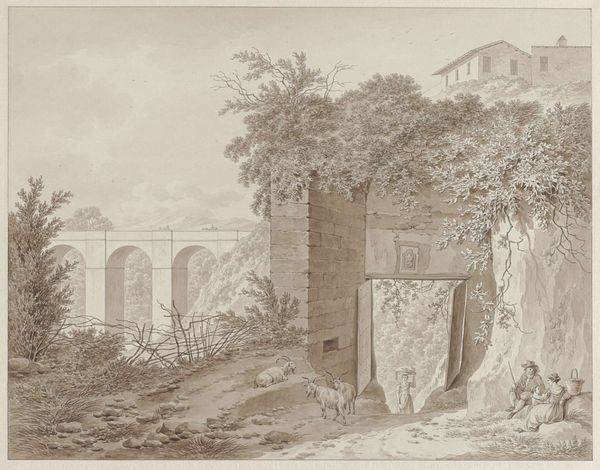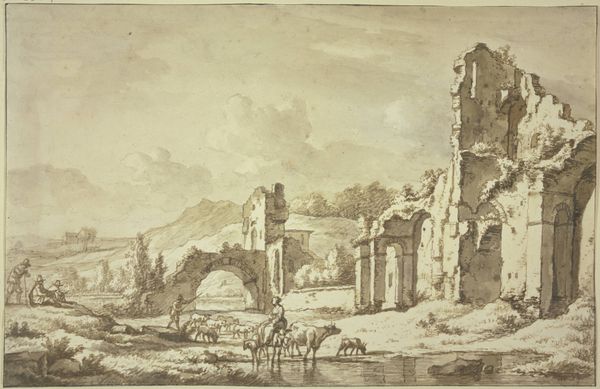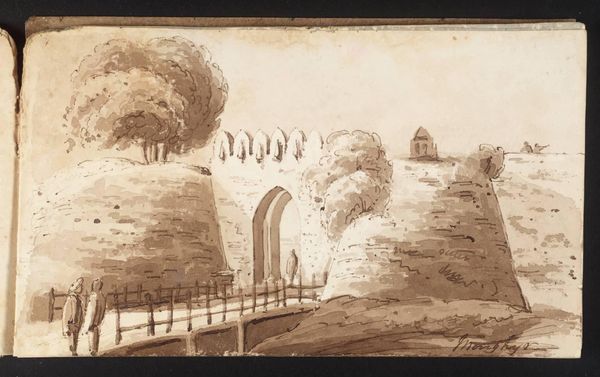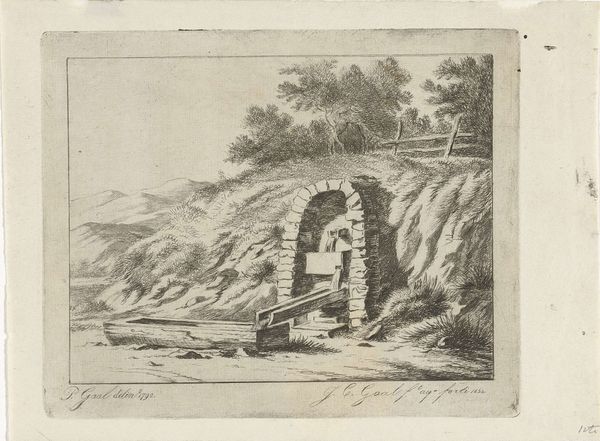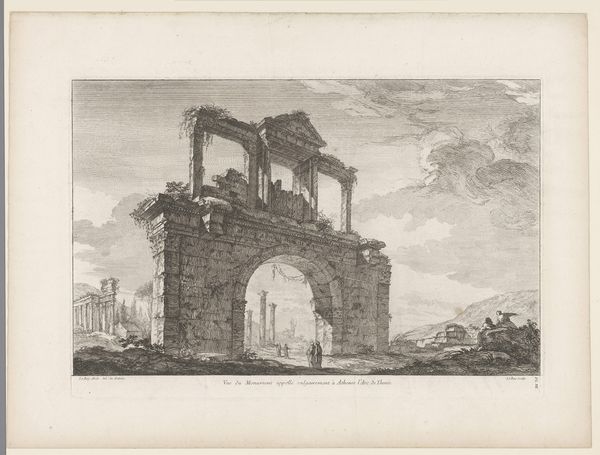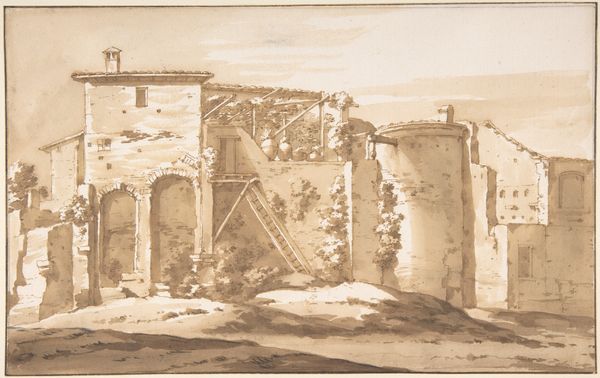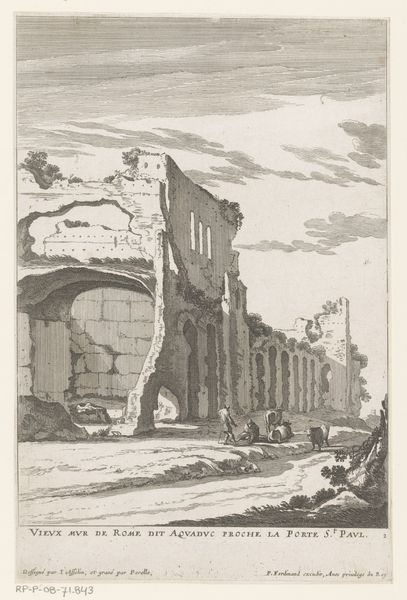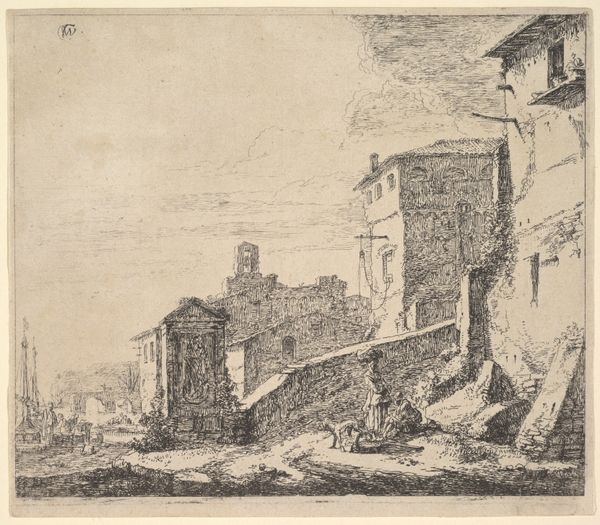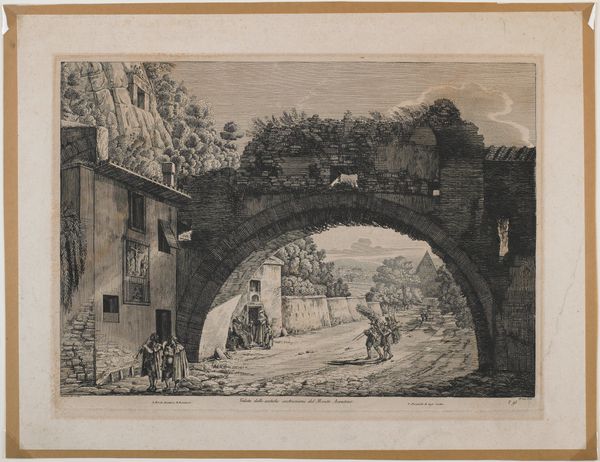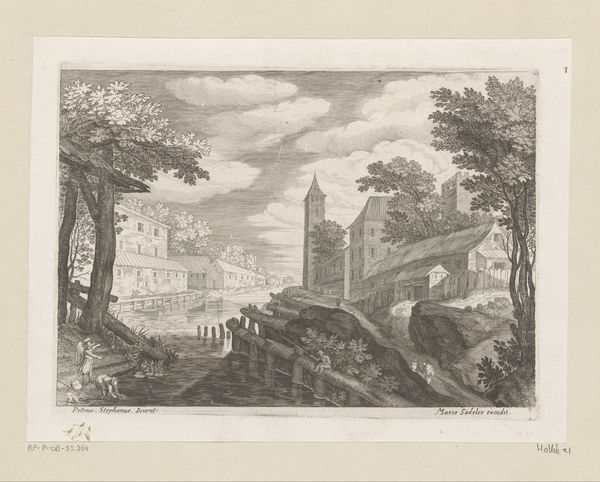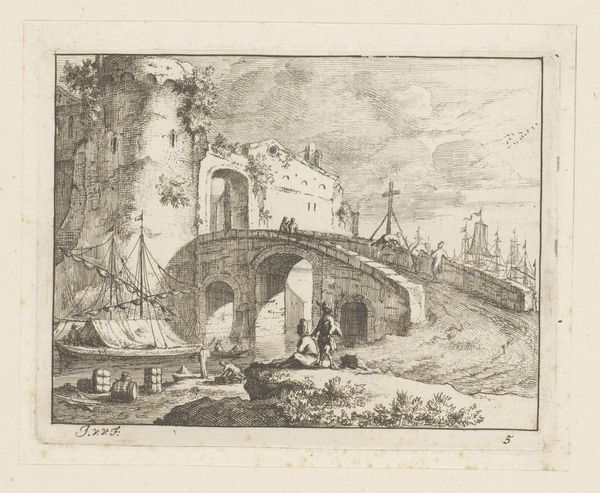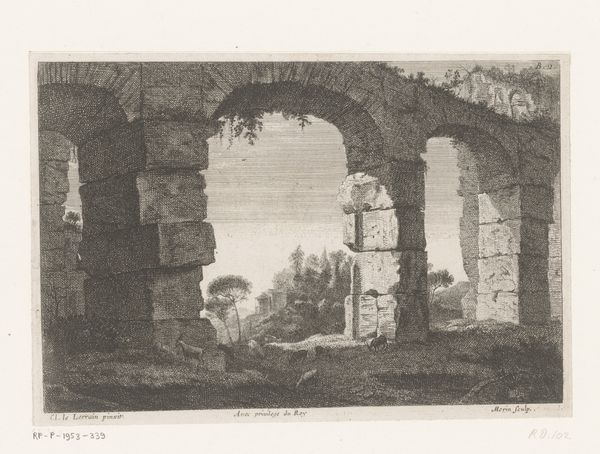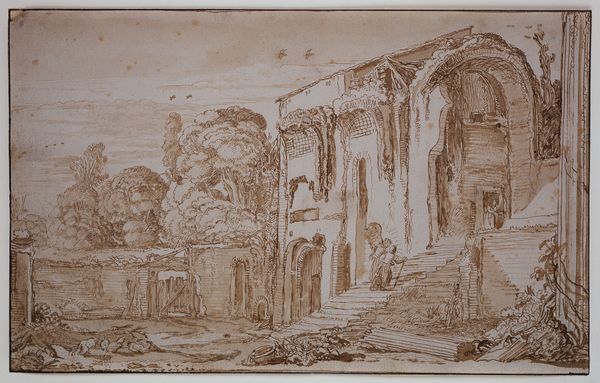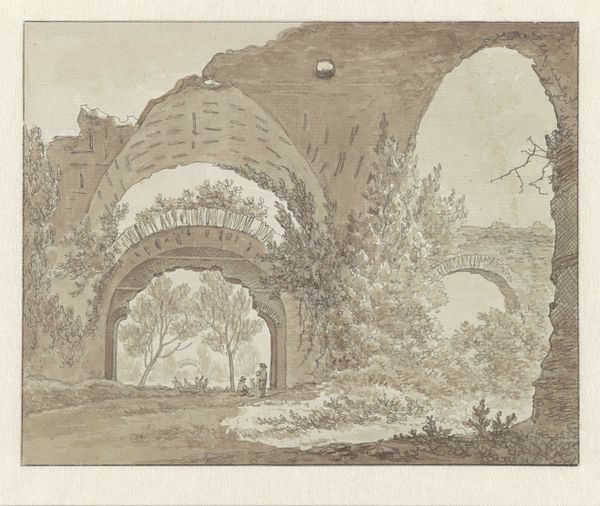
Ancient Aqueduct at the Porta Pio, Rome c. 1742 - 1749
0:00
0:00
Dimensions: 30.5 x 47.2 cm (12 x 18 9/16 in.)
Copyright: CC0 1.0
Editor: Challes' rendering of the "Ancient Aqueduct at the Porta Pio, Rome" feels like a memory, a faded echo of Roman grandeur. What kind of stories do these ruins tell you? Curator: Ruins are potent symbols. Look how Challes positions the lone figure against the monumental aqueduct. Does this contrast emphasize human insignificance against the backdrop of history, or perhaps resilience? Editor: I hadn't considered resilience, more like melancholy. Curator: Both are present, intertwined. Aqueducts, in their time, signified progress, ingenuity. Now, as ruins, they speak to the impermanence of even the most ambitious endeavors. The image becomes a *memento mori*. Editor: So, the aqueduct is more than just a structure; it's a symbol of human ambition and its inevitable decline. Curator: Precisely! And the emotional power embedded within such symbols invites us to reflect on our own place in time. Editor: That's a perspective shift for me; thanks for that!
Comments
No comments
Be the first to comment and join the conversation on the ultimate creative platform.
